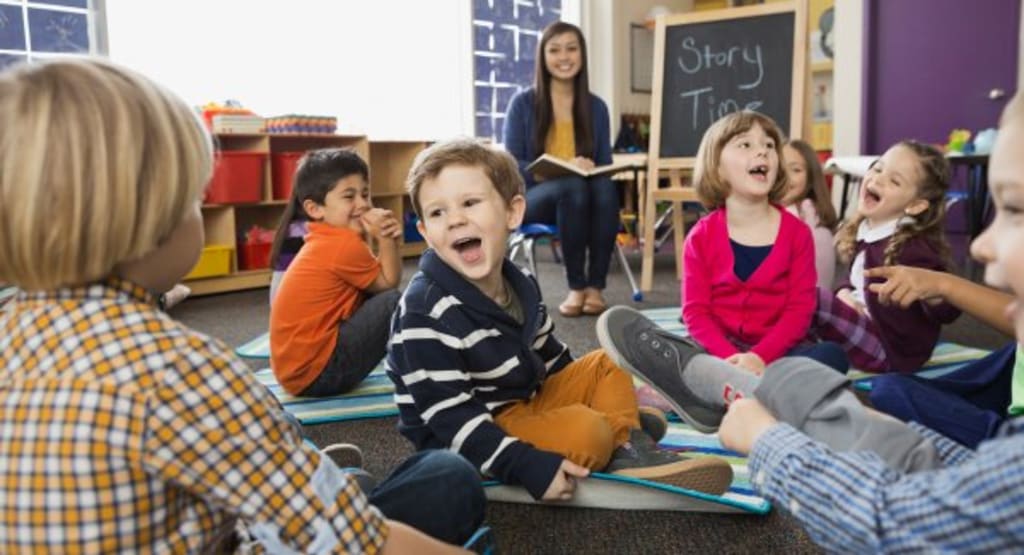Anxiety Activities for Children
A Guide to Helping Kids Understand their Anxiety

There is no question that anxiety is on the rise in America's youth. Between an increase in school shootings and the realities of global climate change, our culture as a whole is in a very high-stress period. Children are not only seeing these worries played out in society, but they are also absorbing them as well. As a result, childhood diagnoses of anxiety disorders are on the rise. While this might seem like a hopeless and scary fact, there are things that parents, teachers, and school counselors can do to help students cope with and understand anxiety. The following activities can be done at home or in school and can be done either one-on-one or in a classroom setting.
1. Anxiety Thermometer
Young children have a hard time differentiating between levels of stress or anxiety. They tend to feel all stressful situations at the same heightened levels, despite some situations not needing such a big response. By allowing students to see anxious situations on a rating scale, they can start to modulate their reactions to everyday situations and start to curb excess anxiety.
Materials needed:
- Clip art image or drawing of a thermometer with three to four defined sections.
- Pens (using different colors for each level of the thermometer might be helpful for some children).
Activity:
Point out that a thermometer has different temperatures and compare that to how situations can be different levels of stressful. Go through each section from slightly stressful to incredibly stressful and ask the students to come up with examples for each type of situation. Fill in the levels with these examples. This is a great start to a deeper class discussion as well.
2. Red Light, Yellow Light, Green Light Game
This is a very similar activity to the last one but it builds upon the concept of different situations having different levels of anxiety by also showing that different people will experience the same situation differently as well. This adds a great social-emotional connection to the activity.
Materials needed:
- Three colors of paper cut into reasonably sized squares for each student.
- A list of situations that your students would reasonably face in their daily lives or hear about from their community or news programs.
Activity:
Read the list of situations out loud one by one and allow the students to hold up a card associated with their feelings about the situation. For example, you might assign green as feeling comfortable, yellow as a little uncomfortable, and red as very anxious. You can also ask students who held up different colors to explain why they chose that color to facilitate class discussion and deeper thinking.
3. Happy Brain vs Anxiety Brain
This is a great art project to include students who are less verbal or those who do best with creative assignments. This also gets students to connect emotions with their brain and helps them understand how their feelings are connected to each other.
Materials:
- Line drawings of two brains on the same piece of paper with the label "happy" over one and the label "anxious" over the other.
- Colored pencils or crayons.
Activity:
Ask students to draw what their brain looks or feels like when they are happy and then what it looks or feels like when they are sad. If this is too abstract for your age group you can ask them to draw things they associate with each emotion and give them example such as "rainbows make me happy so I would put them in my happy brain" or "when I'm anxious it's hard to think so I might put fog in my anxiety brain." Allow students to explain their drawings and prompt them to discuss the differences between the two.
4. Anxiety Check List
Just being able to recognize anxiety is a great first step in building self-awareness; however, it's only the first piece of the puzzle. The next step will be helping them know what to do when they notice themselves getting anxious. By working together to build a standard action plan as a community, the student has a reliable and effective way to cope with the anxiety, in the same manner, every time. This eliminates the helpless or paralyzed feeling that can often be paired with anxiety in children.
Materials:
- Large poster paper.
- Colorful markers.
Activity:
As a class, or as a family, come up with a set plan that can be followed in ascending order of severity. For example, your first step might be taking a couple of deep breaths but further down the line might be asking an adult for help. It might also be a good idea to hang the list in a visible place for everyone to refer back too should the need arise.
By incorporating small lesson additions like these to your curriculum you can help your students feel their best which in turn will help them learn at their best. Incorporating a few minutes of class discussion sprinkled throughout the year to help your students understand themselves and their complex emotions are worth it. Childhood anxiety might be on the rise, but good teachers, parents, and school counselors can make all the difference in supporting students through their formative years.
Like what you just read? Please, consider leaving tip to help me continue to share my mental health knowledge with you.
About the Creator
Alina Gallupe
I am a graduate student of Mental Health Counseling in Cambridge, MA. I strive to combine my mental health knowledge and my love of writing to explore all topics related to the human experience. I am also a dedicated cat mom and home cook.






Comments
There are no comments for this story
Be the first to respond and start the conversation.